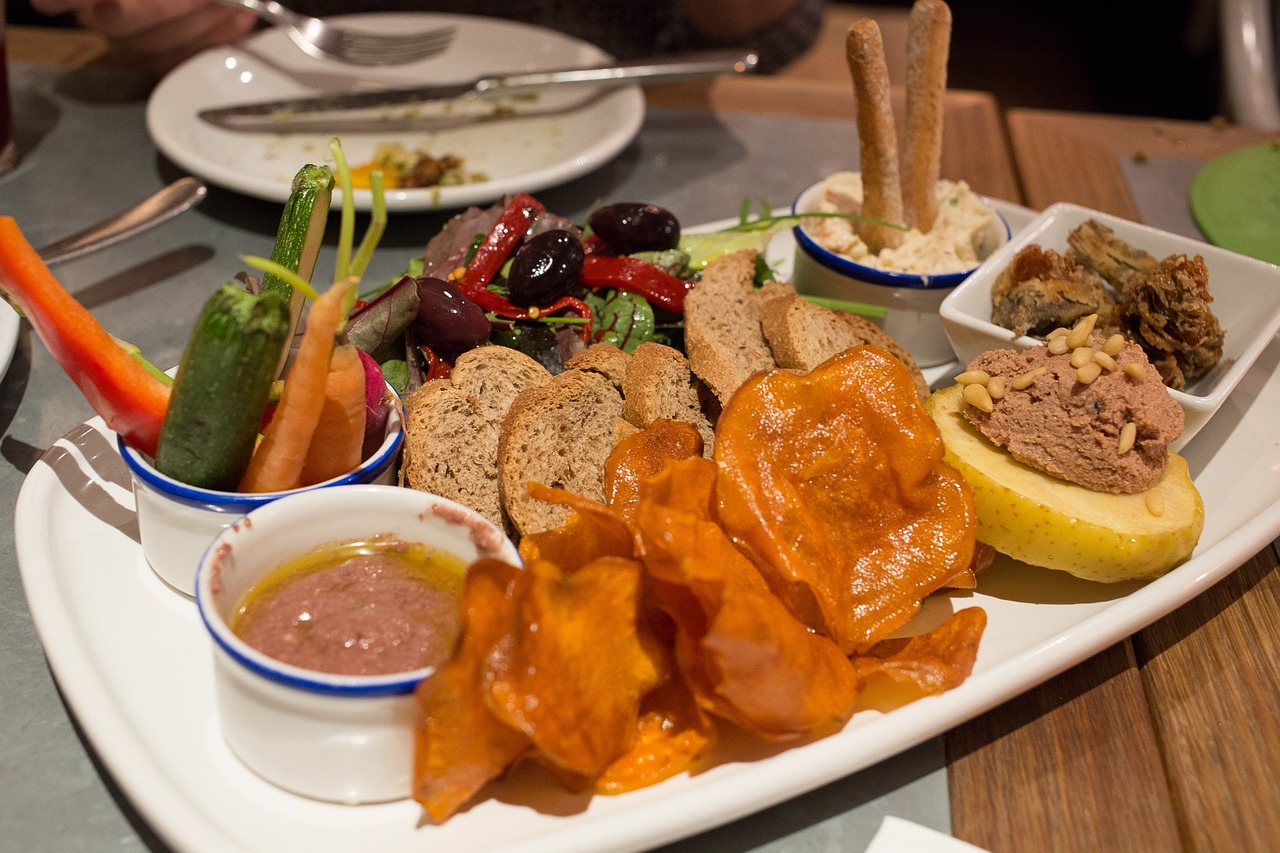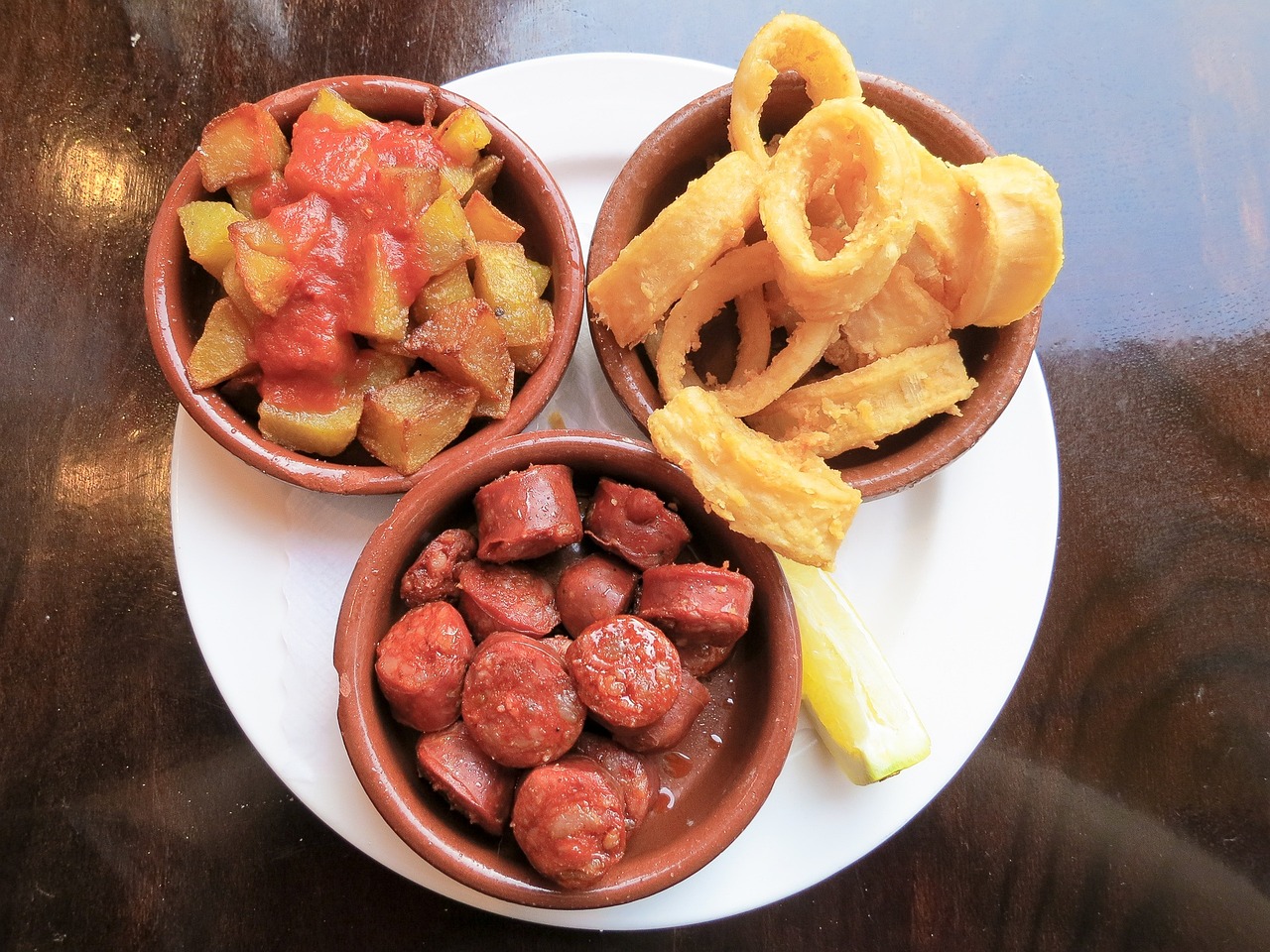Spanish Tapas Platter: Assorted Small Plates of Deliciousness

When it comes to Spanish tapas, get ready to embark on a culinary adventure like no other. These small plates of deliciousness are a feast for the senses, bursting with flavors and textures that will leave you craving for more. Picture a vibrant platter filled with an assortment of savory bites, each offering a unique taste of Spain's gastronomic heritage.
From crispy croquettes to succulent shrimp, every bite of a tapas platter is a delightful surprise waiting to explode in your mouth. These small plates are not just a meal; they are an experience, a journey through Spanish flavors that will transport you to the bustling streets of Barcelona or the cozy taverns of Madrid.
Imagine the excitement of trying a variety of dishes, from classic favorites like patatas bravas to innovative creations that push the boundaries of traditional Spanish cuisine. Each bite is a revelation, a moment of culinary bliss that brings people together, sharing laughter and stories over a table filled with irresistible treats.
So, gather your friends and family, pour a glass of Spanish wine, and dive into a Spanish tapas platter that promises an explosion of taste and a symphony of flavors. Whether you are a seasoned foodie or a curious explorer of new tastes, the experience of indulging in a tapas feast is one that will linger in your memory long after the last bite is gone.
History of Tapas
Tapas, the beloved small plates that have become a staple in Spanish cuisine, have a rich and fascinating history that dates back centuries. The term "tapas" is said to have originated from the Spanish verb "tapar," which means to cover or lid. Legend has it that tapas were born out of necessity, with bartenders in Andalusia placing a small plate or saucer over a glass of wine to prevent flies from buzzing in. This practice eventually evolved into serving small bites of food alongside drinks, giving rise to the tradition of tapas.
Historically, tapas were simple and humble dishes, often consisting of olives, cheese, or slices of cured meats. They were meant to be enjoyed as a quick snack to accompany a glass of sherry or wine. Over time, tapas grew in popularity and variety, with each region in Spain putting its own unique twist on these small plates. Today, tapas have become synonymous with socializing, with friends and family gathering to share a variety of flavorful dishes in a convivial atmosphere.
The concept of tapas also has cultural significance in Spain, embodying the spirit of sharing and community. In many Spanish cities, it is common to go from one tapas bar to another, sampling different dishes along the way. This tradition of "tapeo" not only allows people to enjoy a diverse range of flavors but also fosters a sense of camaraderie and connection.
Tapas have transcended their humble origins to become a culinary art form, with chefs across Spain putting their own creative spin on traditional recipes. From classic favorites like patatas bravas and croquetas to innovative creations featuring local ingredients, tapas continue to captivate diners with their bold flavors and inventive presentations.
Popular Tapas Dishes
When it comes to popular tapas dishes, Spanish cuisine offers a delightful array of flavors and textures that are sure to tantalize your taste buds. From crispy patatas bravas to succulent gambas al ajillo and the classic tortilla española, each dish brings a unique touch of Spain's culinary heritage to the table.
Let's start with the iconic patatas bravas, which are crispy fried potatoes served with a spicy tomato sauce and creamy aioli. These bite-sized delights are perfect for those who enjoy a combination of crunchiness and bold flavors in every bite.
Next up, we have gambas al ajillo, a dish that features plump shrimp sautéed in garlic-infused olive oil. The aroma of garlic fills the air as you savor each shrimp, perfectly cooked to tender perfection. It's a dish that embodies the simplicity and elegance of Spanish cooking.
And who can forget the beloved tortilla española, a Spanish omelet made with eggs, potatoes, and onions. This hearty dish is a staple in tapas bars across Spain, offering a satisfying blend of flavors and textures that are both comforting and delicious.
Other popular tapas dishes include albondigas (Spanish meatballs), pulpo a la gallega (Galician-style octopus), and croquetas (croquettes filled with various ingredients). Each dish brings its own unique twist to the tapas experience, showcasing the diversity and creativity of Spanish cuisine.
Whether you prefer seafood, meat, or vegetarian options, there is a tapas dish to suit every palate. So, the next time you're craving a taste of Spain, indulge in a selection of popular tapas dishes and transport your senses to the vibrant streets of Madrid or Barcelona.
Creating a Tapas Platter
Creating a Tapas Platter is an art that combines flavors, textures, and presentation to delight your taste buds and impress your guests. To craft the perfect tapas experience, follow these essential steps:
- Selection of Dishes: Start by choosing a variety of tapas dishes that offer a balance of flavors and ingredients. Include options like cured meats, cheeses, seafood, and vegetarian dishes to cater to different preferences.
- Consider Quantity: Estimate the number of guests you will be serving and select an appropriate quantity of each dish to ensure everyone gets to enjoy a taste of each delicacy.
- Balance of Flavors: Aim for a harmonious mix of flavors on your platter, combining salty, savory, sweet, and tangy elements to create a well-rounded tasting experience.
- Visual Appeal: Arrange the tapas on a large platter or individual plates in an aesthetically pleasing manner. Play with colors, shapes, and garnishes to make the presentation visually enticing.
- Temperature Variation: Serve a combination of hot and cold tapas to add contrast to the dining experience. Warm dishes like croquetas or grilled vegetables can be complemented by chilled gazpacho or marinated olives.
By following these guidelines, you can elevate your tapas platter from a simple assortment of dishes to a culinary masterpiece that captivates both the palate and the eyes. Remember, the key to a successful tapas spread lies in the thoughtful selection and arrangement of each component, creating a symphony of flavors that leaves a lasting impression on your guests.
Pairing Tapas with Wine
Pairing tapas with wine is an art that enhances the dining experience, elevating the flavors of each dish and creating a harmonious balance on the palate. When selecting wines to accompany your Spanish tapas platter, consider the diverse range of flavors and textures present in the small plates. Here are some tips to help you master the art of pairing tapas with wine:
- Match Intensity: Pair light tapas dishes with light-bodied wines and heavier tapas with full-bodied wines. For example, pair delicate seafood tapas with a crisp white wine like Albariño, and rich meat tapas with a bold red like Tempranillo.
- Consider Acidity: High-acid wines like Txakoli or Verdejo can complement fried or oily tapas by cutting through the richness and cleansing the palate.
- Contrast Flavors: Opt for wines that contrast or complement the flavors of the tapas. For example, the saltiness of jamón ibérico can be balanced with a slightly sweet Sherry or a sparkling Cava.
- Regional Pairings: Explore regional pairings by matching tapas from specific Spanish regions with wines from the same area. Enjoy Basque pintxos with a Txakoli or Rioja tapas with a Rioja wine for an authentic experience.
Remember, the key to a successful tapas and wine pairing is experimentation and personal preference. Don't be afraid to try different combinations to discover your favorite matches and create a memorable culinary journey for you and your guests. Cheers to the delightful fusion of Spanish tapas and wine!



 HazalVardal
HazalVardal 





